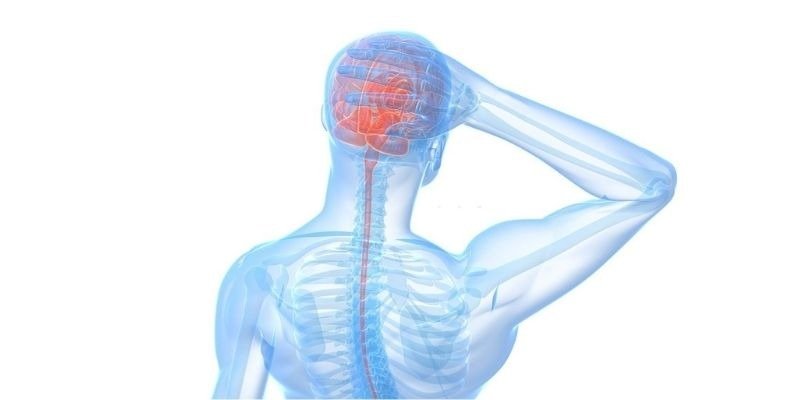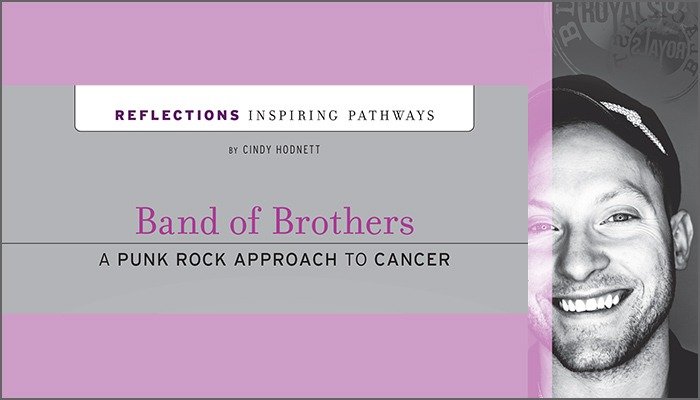Connection Between Pain And Your Brain

Do you know what causes pain? Why does it hurt so bad when you scratch yourself somewhere? What makes a pain sensation and gives intense ache on the wounded area? Well, all these questions are related to each other. The ultimate reason for any form of pain is our brain.
What Is Pain? What Is The Reason For Pain?
We feel pain when our nerve cells sense danger. It occurs when you get an icky feeling like a prick, burn, sting, ache, or tingle in your body. Pain can be acute or dull. Sometimes, it may go away with time or become constant.
When there is a wound or inflammation in your body, the body will automatically stimulate pain receptors that release chemicals. These chemicals cause acute pain in the wounded spot. The Spinal cord takes an electric signal from pain receptors to the brain. The cerebral cortex, a part of the brain, receives this signal. However, all this process will happen instantly.
For instance, getting a paper cut on the skin will transmit a signal through a reflex arc in the spinal cord. It causes an instant contraction of the muscles.
Nerve System And Brain:
The human nervous system has two main parts- the spinal and the brain. They combine to form the central nervous system.
Our brain and spinal cord receive signals from the nerves while sending out enormous patterns of signals to the muscles that control our hands, spinal, and legs activities.
Moreover, our nervous system handles the vital role of sensing pain in the body. We have trillions of nerves in our bodies. They transmit an electrical signal from the brain, spine, and other parts of the body.
What Are The Types Of Pain?
Your brain alerts the body that the wounded area requires attention when hurt. Our brain is a complicated organ that handles thousands of tasks all day. Well, there are a few common types of pain based on its characteristics.
Acute Pain:
It is a type of pain that lasts less than three to six months of time. It occurs when there is any soft tissue damage like paper cuts in the body. Acute pain usually stays for a short period and goes away once the injuries get healed.
Neuropathic Pain:
This pain takes place when there is any injury to the nerves. It transfers information from the spinal cord to the brain from other body parts. In this type, it is usually sensitive to touch the injured spot.
Nociceptive Pain:
Nociceptive pain is a type of pain that occurs when there is damage to body tissue. It feels intense, aching, or even throbbing. This type of pain comes during the circumstances like dental procedures, hurt during sports.
Chronic Pain:
Chronic pain lasts over three months of time. It can take place in any part of the body and can interfere with your daily activities. In the worst-case scenario, it could lead to health issues such as depression and arthritis.
Radicular pain:
Radicular pain travels along with the spinal nerve. This type of pain diverges from your back and hip into your legs via the spine. It causes numbness, tingling, and weak muscle to your leg.
Other Factors That Cause Pain:
Pain is not only physical but also mental. Researches found that the human brain reacts the same for physical and mental injury. In other words, the pain during a heartbreak is similar to the pain during a sports injury. The reaction to both of these cases is moreover related to one another.
How Do Pain Signals Travel From Spine To Brain?
As we know, every part of the human body contains an enormous amount of nerves. Each nerve has a connection with pain receptors on one end. They transmit an electrical signal when the nociceptors(pain receptors) sense any tissue damage.
The opposite end of these nociceptors has a connection with the spinal cord through a long nerve fiber. It gets activated when sensing an electric signal from nociceptors and then moves towards the neurone in the peripheral nerve.
It reaches the spinal cord in the neck. The cerebral cortex of the brain receives the pain signal and sends an alert to the body. Ultimately, the natural immune system in our body will initiate the healing process.
How To Classify The Intensity Of Pain?
The three most commonly used tools to classify pain intensity include verbal rating scales, visual analog scales, and numeric rating scales.
Verbal Rating Scales (VRS):
Verbal rating scales are also known as Verbal Descriptor Scales (VDS). It uses common words like mild and severe to denote the intensity of pain.
Visual Analog Scale (VAS):
The visual analog scale is a widely used tool to calculate pain intensity. Usually, a person will mark the pain intensity value along a 100-millimeter horizontal line. Then, the doctors will measure it from the left edge.
Numerical Pain Rating Scale (NPRS):
The numerical pain rating scale is a measure in which a person will rate their pain on an eleven-point numerical scale. The scale consists of numbers from zero to 10 that indicate no pain to severe pain levels.
What Happens After We Get An Injury?
We will go through a natural process that reduces pain and starts healing the wound. The healing process occurs in four stages. All of these phases have to take place in a proper sequence and time structure.
Stage1:Hemostasis:
Hemostasis is the first stage of healing where the injury stops bleeding and repair it. The main requirement of this process is to limit blood loss and prevent infections. In worst cases, the wound might cause problems like very little or very much clotting.
Stage 2:Inflammation:
In this phase, the removal of injured cells, pathogens, and bacteria occur. The nutrients, enzymes, and White Blood cells(WBCs) cause swelling. You can see slight redness on the wound during this stage.
Stage 3:Proliferation:
In this stage, the swelling reduces, and new tissues will form above the damaged ones. The new tissues will have collagen and an extracellular matrix that contracts the wound.
Stage 4:Remodeling:
It is the final stage of the healing process that lasts from 21 days to two years. Remodeling is a long phase where collagen synthesis occurs to strengthen the tissues.
As human beings, we all go through different forms of pain. Our brain plays a vital role in helping us fight all the negatives that can occur from an injury. Since from the time of injury to the final stage of healing, our brain performs all the required actions. However, if the intensity of the pain is unbearable, you should visit a physician.
PainPathways Magazine
PainPathways is the first, only and ultimate pain magazine. First published in spring 2008, PainPathways is the culmination of the vision of Richard L. Rauck, MD, to provide a shared resource for people living with and caring for others in pain. This quarterly resource not only provides in-depth information on current treatments, therapies and research studies but also connects people who live with pain, both personally and professionally.
View All By PainPathways





